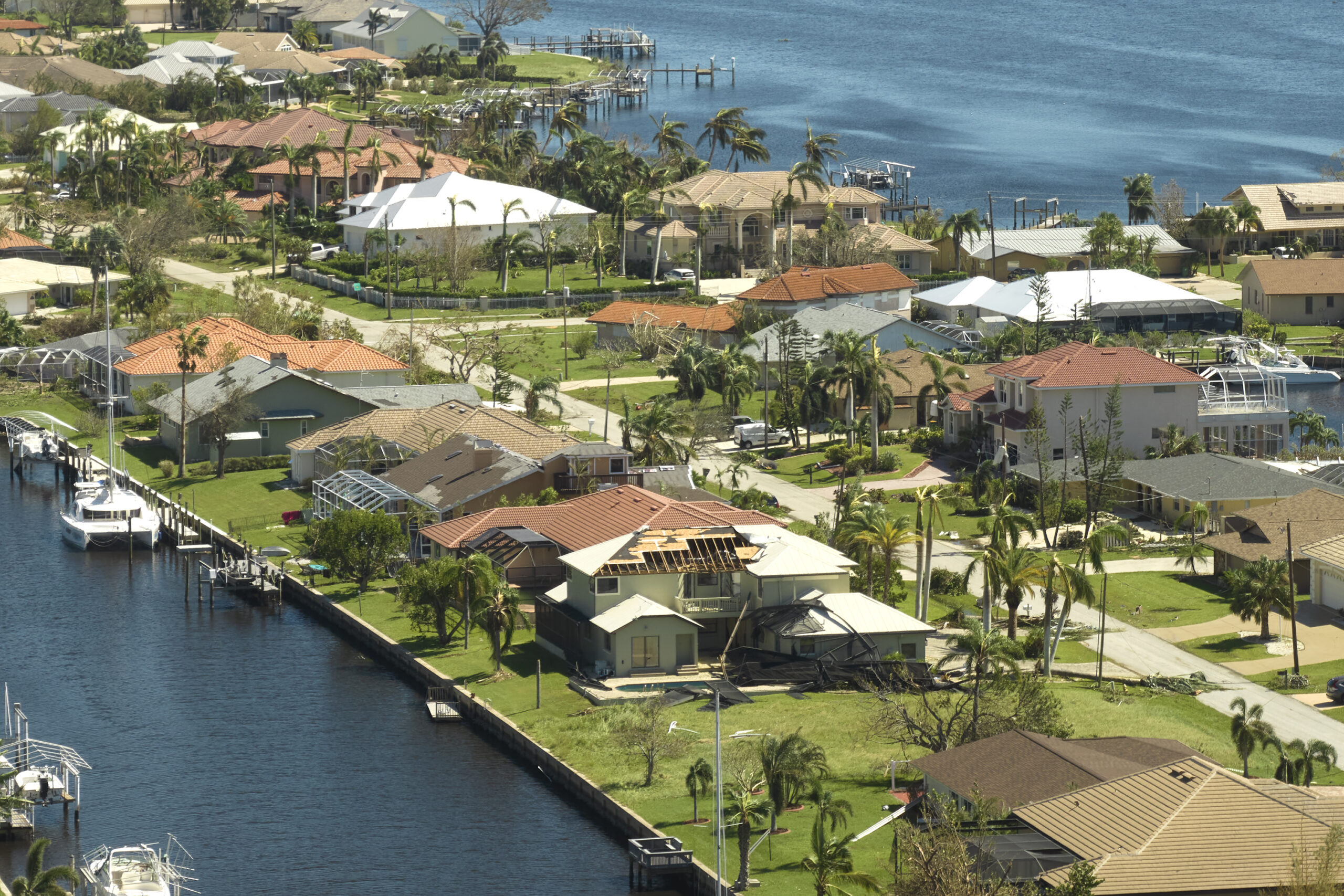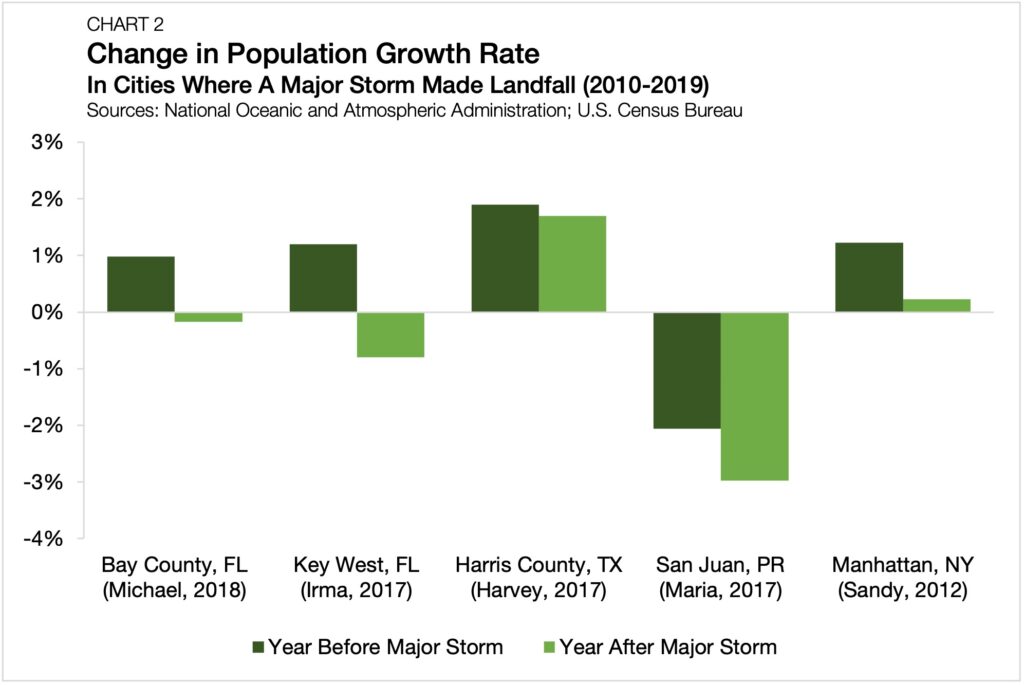Florida Population Growth Steady Despite Ongoing Hurricane Threats

- Hurricane Ian once again raises questions about population growth in Florida, but studies suggest major weather events do not have a material impact on areas with steady or already declining populations.
- Disaster relief efforts can lead to job creation and new housing in affected areas — often attracting new residents as a result.
- Individual cities located where storms make landfall experience more amplified declines in population growth, as many residents move elsewhere and a loss of housing supply limits in-migration.
Over the past decade, Florida’s resident population grew twice as quickly as the national average. However, the increased frequency of major hurricanes brings into question whether robust in-migration patterns will hold in the face of growing climate risks.
According to data from the Atlantic Oceanographic & Meteorological Laboratory, 32 Category 4-or-5 hurricanes have made landfall on the U.S. mainland since records began in 1851, and 44% (14 total) have hit Florida. Five have occurred since 1992, and four of those five were the strongest storms in the state’s history.
While there is a growing concern that the increase in extreme weather events could dampen housing demand in at-risk or effected areas, history displays a different pattern.
History Shows Major Hurricanes Result in Marginal Population Change
A 2016 study that zeroed in on hurricanes and tropical storms between 1980 and 2012 found that extreme weather events only suppressed population growth in already growing, high-density cities, with little to no impact on low-density areas with steady or declining populations.[1] At the time of the study, only 2.0% of U.S. counties were considered both “growing” and “highly-dense.”
Specifically observing Florida before and after five of its most historic hurricanes over the past three decades, annual population growth averaged 1.7% during the year after a major storm compared to an average of 2.0% for years preceding a major storm (Chart 1). Hurricane Charley, which had a similar landfall to Ian, was the only major hurricane where population growth increased during the following year.

Despite a modest decline in Florida’s population growth following a major hurricane, its marginal change supports the argument that storms have limited influence on housing demand. In short, the study found that Florida’s hurricane-prone location has had a negligible impact on the willingness of relocating Americans to choose the Sunshine State.
While the study did not find a significant slowdown in state-level population growth in Florida, localities where storms make an initial impact typically experience more amplified declines (Chart 2). In many cases, residents are forced to move elsewhere and impairment to the existing housing supply limits in-migration, two factors driving population loss.

Migration Resiliency (and its Caveats)
There are reasons that explain why migration often holds up after a major hurricane, but also examples of where migration doesn’t hold up.
A 2016 study that looked specifically at hurricane impacts on migration along the Gulf Coast found that counties with higher levels of hurricane-related damage experienced reduced growth for up to three years after a hurricane event. However, many of the areas included in the study had low poverty rates. In general, higher-income residents have more flexibility to relocate. In areas with higher poverty rates and a higher proportion of income-constrained residents, the majority of the population will often have little choice but to stay and rebuild.
Further, the rebuilding effort — which often includes both repairs and new demand for longer-term improvements to disaster-related areas — is likely to create jobs and therefore, new housing demand in affected areas. Naturally, this increase in housing demand alongside the heterogeneous shock to housing supply induced by the storm tends to push vacancy rates lower and net absorption rates higher. In the short term, this will likely keep apartment incomes stable and reinforce the growth potential in hurricane-effected areas. However, it can mask the impact on affected households and local governments who absorb much of the costs, while eroding affordability for existing residents.
South Florida Attracts Record Inflows Despite Risks
While history suggests that housing demand should remain resilient following a major storm, the frequency of major occurrences could discourage moves by an increasingly climate-weary U.S. population. According to Redfin, 62% of people who plan to buy or sell a home in the next year are reluctant to relocate to a place at risk of natural disasters, extreme temperatures, and/or rising sea levels. For now, South Florida continues to attract record levels of inflows, as its relatively low cost of living and paradise-esque appeal draw new residents to its shores.
[1] Study uses the compounded annual growth rate in each county to determine where populations are growing, using population per square foot to delineate density.
Interested in the multifamily real estate investment market? Contact Arbor today to learn about our array of multifamily and single-family rental financing options and view our other market research and multifamily posts in our research section.

